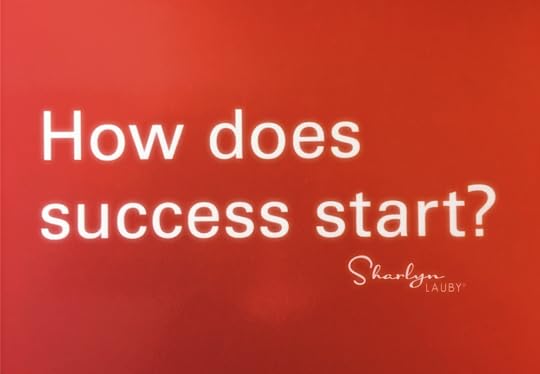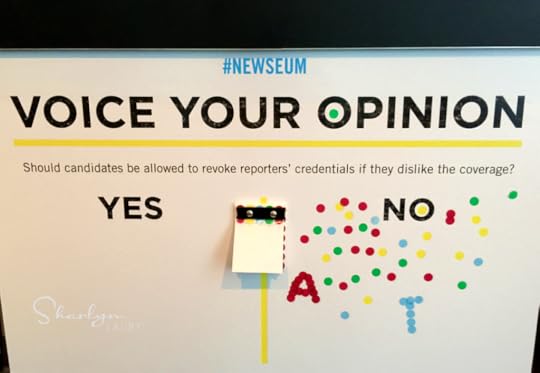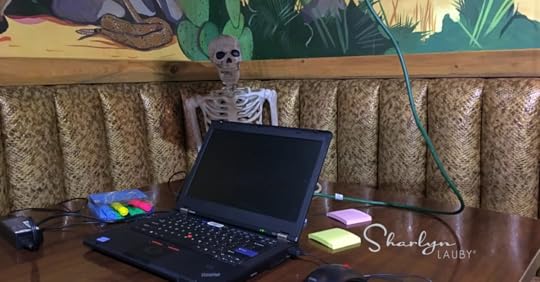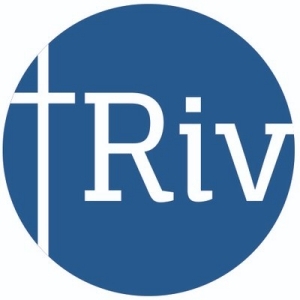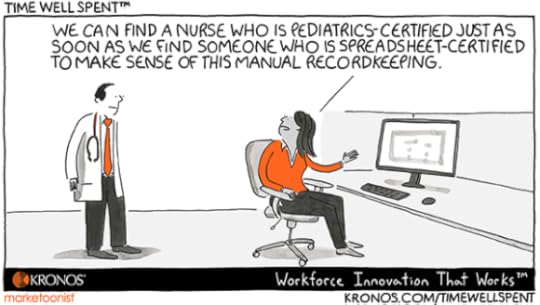Sharlyn J. Lauby's Blog, page 109
October 14, 2018
Everyone Has Influence. Everyone! – Ask #HR Bartender
Yes. Everyone!
I’ve seen quite a bit of conversation lately about human resources and influence. I received this note from an HR Bartender reader and thought it might be good to answer it here on the blog.
Hi Sharlyn. I hope my message finds you well. You must know that you are my true HR Hero. I would like to seek your advice on starting a HR blog. I have nine years of HR experience mostly in a generalist role. I have both good success (and downfall) stories as a HR practitioner but I don’t want to bore readers with HR life stories (you know what I mean). Could you give me some tips on what I can write about? Thanks a million!
First of all, I want to thank the person who sent this note. It’s very nice and totally made my day! I see this note having three parts: 1) starting an HR blog, 2) telling HR stories, and 3) influence. Let’s start with the first one, blogging. I’ve written posts about being a blogger before. Here’s a few of them:
5 Things I’ve Learned from HR Bartender
Buy My Stuff and Click My Junk
In addition to these, there are a variety of articles out on the interwebs about how to start blogging. Both from a logistical view as well as writing. Mr. Bartender and I still go to events like WordCamp to stay current with what’s happening from a technical perspective. And I read several writing blogs, so I can continue to become a better writer. I think the better I get at writing, the better I become at expressing myself. Which leads me to topic number two, telling HR stories.
We all have HR stories. Just get a group of HR pros together and the stories begin to flow. While HR professionals can learn in many ways, there are times when hearing other people’s crazy HR stories that adds to the learning. In my experience, I know there have been times when I thought “no one else deals with this crazy” or it would be embarrassing to ask a question “because the work craziness is a reflection on my HR knowledge and skills.” Well, get that thought out of your head right now. You do not control workplace crazy. Even though you have to deal with it.
HR professionals need to hear other HR pro’s stories. Look, we’re not asking anyone to name names and reveal confidential and proprietary information. But sharing war stories can be valuable. Both the good and the bad. The boring and the exciting. The funny and the sad. It helps readers realize they’re not alone. Which leads to the last point – influence.
People shouldn’t be hesitant to share their stories because they feel they might be boring. Boring is okay. Boring helps people. Tell your story. Tell all of your stories. Because trust me when I say this, your story will be relevant, valuable, and helpful to someone.
I enjoy a funny story as much as the next person. But deep down we all know that funny stories aren’t always relevant, valuable, and helpful. They are entertaining. But when I’m looking for answers, I’m not looking for funny stories. I am looking for proven results.
So, go out there and start a blog. Share your stories. Influence others. The profession really needs it.
Image captured by Sharlyn Lauby after speaking at the Learning and Development League 2016 Annual Conference in Delhi, India
The post Everyone Has Influence. Everyone! – Ask #HR Bartender appeared first on hr bartender.






October 12, 2018
Bookmark This! Workplace Grief Edition
I recently had an HR Bartender reader contact me about how to handle a very tough situation. One of the employees at her company had committed suicide. At the same time that I received her note, I saw a couple of posts on my Facebook page about employees who had lost a co-worker to illness.
Death is a difficult subject. Organizations need to realize that on most days, employees spend one-third or more of their time with co-workers. They celebrate successes together. They deal with failures together. Employees talk about their lives over coffee in the breakroom and pizza during training. When employees hear about the death of a co-worker, it’s an emotional time.
I found a few resources that you might want to bookmark when the time comes for your company to deal with workplace grief.
How to Cope with the Death of a Colleague
Making Your Workplace Safe for Grief
5 Things Employers Can do to Manage Grief in the Workplace
Manager’s Guide to Suicide Postvention in the Workplace
How to Handle and Help with Workplace Grief
Coping After a Suicide Loss at Work
When I worked for the airline, we had a crash. All of the passengers died, including the crew. The company brought in grief counselors to walk around and talk with employees. The counselors scheduled regular calls with people who were on the emergency response team to see how they were doing. That happened for months after the crash. Yes, months. Employees who admitted they didn’t even know the crew were upset. The organization was committed to making sure everyone had the opportunity to process workplace grief.
I know none of us like talking about death and dying. I don’t like it either. But as human resources professionals, we need to help our organizations during these tough times. If you have an employee assistance program, reach out to them. Talk to your health insurance broker. Call a community-based organization that can help.
Hopefully, you will never have to use this list. But you will find some comfort in knowing you have it.
Image captured by Sharlyn Lauby while exploring the Wynwood Wall Art District in Miami, FL
The post Bookmark This! Workplace Grief Edition appeared first on hr bartender.






October 11, 2018
Finding Personal and Professional Balance – Ask #HR Bartender
A reader recently left me a note that I wanted to share:
A lot of people, including myself, struggle when it comes to “me” time. All of a sudden, I feel guilty because I know I could be doing something productive. And when I have a lot on my plate, that free time is somehow poisoned with guilt, and it’s not even worth it. So, I go on until I’m all burnt out and then I need a break. What advice would you give to someone who feels everything in their schedule is a priority?
I can totally relate to this comment. In today’s fast-paced business environment managing work and home demands can be a challenge. Then add to it our technology driven society and the need to “always be “on” and it can lead to loss of balance and guilt and burnout.
I will admit, I don’t have all the answers to balance here. But there are a few things that I do (or that I try to do) to help reduce the negative self-talk and guilt. The first thing is that I try to create a perfect morning routine. At least, my version of perfect. I’ve always said that the rest of my day is out of my control, but I can usually control my morning, so I’ll make it what I want it to be.
If you like that idea, I recently read an article over on Michael Hyatt’s blog titled “What You Do Right Before Bed Determines How Productive and Focused You’ll Be Tomorrow” and it focuses on developing an evening routine. I could get into this concept very much. My perfect evening routine involves tea.
Regular readers of HR Bartender know a couple of years ago, I took Arianna Huffington’s online “Thrive” course. She provided some great insights about how “High Performance Involves Taking Care of Yourself”. One of the things I try to remember when struggling with “me” time is that I’m doing this – meaning taking time for myself – so I can be a better worker.
Another time where I deliberately place extra emphasis on taking care of myself is when I travel. It’s so easy to eat poorly, not get enough sleep, etc. This all has an impact on well-being. Here’s a list of 10 Ways to Improve Your Business Travel Experience and take better care of yourself.
But taking care of us can’t always happen outside of work. On the job, managing stress is important. I love the advice of Srikumar Rao on “How to Reduce Individual Stress Levels at Work”. And in this article I’ve listed Resources on Mindfulness and Stress Reduction from Pandit Dasa, author of the book, “Urban Monk”.
Finally, I recently saw someone reading this book on a plane. Then, it shows up on Laurie Ruettimann’s HR Book Club reading list. So it must be good (and I need to pick it up) – Jen Sincero’s “You are a Badass: How to stop doubting your greatness and start living an awesome life”. Because sometimes we need someone to tell those voices inside our head to stop it.
I hope these resources are helpful in the never-ending quest for balance. I really wish there was some sort of magic formula to reducing the stressors in our lives. Unfortunately, I think it involves a lot of trying things and seeing if they work. That in itself can be incredible fun.
Image captured by Sharlyn Lauby after speaking at the HR Technology Conference in Las Vegas, NV
The post Finding Personal and Professional Balance – Ask #HR Bartender appeared first on hr bartender.






October 9, 2018
5 Talent Acquisition Strategies for Highly Competitive Industries
(Editor’s Note: Today’s post is brought to you by our friends at SilkRoad, a provider of talent activation technology. Check out their latest research, “The Awakening: Onboarding Emerges as a Strategic Driver.” The report details how organizational leadership increasingly sees improved onboarding as a strategic imperative to support the success of the business. It’s a must-read for any talent acquisition professional. Enjoy today’s article!)
Regular readers of HR Bartender know that the majority of my corporate experience is in the hospitality, entertainment, and transportation industries. These industries are known for talent being a key differentiator in delivering business results. For example, all hotels have beds. And airlines have seats. While we could argue all day about the quality of the physical products, my guess is that we would agree that the key difference is with their people. We don’t remember what soap was in the hotel room or the snacks on the plane. We remember how we were treated.
But another thing these industries are known for is being highly competitive when it comes to talent acquisition. When people are a key differentiator for your business, you want the best. And organizations are willing to pull out all the stops to get it.
As the labor market continues to challenge us, I thought it might be helpful to share some of the strategies that highly competitive industries use when trying to attract the best talent.
Workforce planning is conducted regularly. When you’re constantly in a talent acquisition mode, you have to understand talent supply and demand. We regularly looked at what was happening in the labor market, particularly in technical roles like culinary and flight operations, where having specialized credentials and licenses were necessary.
Successful recruiters in these industries don’t wait for requisitions. Because it was common to be looking for a needle in a haystack when it comes to managerial positions, when we found someone who was a fit, we hired them. If they were the right person, they were capable of being flexible about their responsibilities. Ultimately, the new hires would pay for themselves.
Hiring managers are engaged in the process. Since managers knew they could hire the right talent without a requisition, they were very engaged in the hiring process. That doesn’t mean they didn’t consult HR or that the sources surfaced by talent acquisition didn’t work. It simply meant that “everyone” was a part of the recruiting effort.
They treat candidates like customers. The people who applied for jobs at the hotel, theme park, or airline could also be customers at the hotel, theme park, or airline. So, our goal was for every candidate to remain a raving fan of the business – even if we turned them down for a job. One of the biggest ways we did that was by following up with every single applicant.
Pre-boarding includes learning the product or service. Don’t get me wrong. There’s a lot of value in having candidates pre-board by completing new hire paperwork. But we took the extra step of making sure new hires were able to experience the product or service. For example, front desk agents spent a night in the hotel to experience the place the same way a guest would.
With unemployment at historic lows, organizations everywhere might consider themselves in a “competitive industry” situation. And it’s important to note that competition isn’t reserved just for your industry. If the majority of the jobs you hire have lots of transferable skills, geography can also be competition. When I worked in hotels, another hotel wasn’t always my competition. It might be the retail store or call center nearby. Our employees were able to do those jobs. Working in a highly-competitive industry can really keep you on your toes.
So, as you’re entering “budget season”, think about your candidate and employee experiences. Are there activities that talent acquisition should commit to, like making sure every applicant gets a reply? Now’s the time to start putting those implementation plans in place. Because by all indications, the recruiting function in 2019 isn’t going to get any easier.
P.S. Speaking of 2019, there is another area HR might want to focus on the employee experience. Specifically onboarding and creating engagement. Join me and the SilkRoad team on Tuesday, October 23, 2018 at 1p Central/2p Eastern for a webinar on ”High-Turnover Organizations: How to Onboard and Engage New Hires”. As always, if you’re already booked and can’t make the live session, sign up anyway and listen to the recording. It’s been pre-approved for SHRM and HRCI recertification credit. Onboarding is the new hire’s first impression. In a competitive hiring landscape, you want that impression to be a good one!
The post 5 Talent Acquisition Strategies for Highly Competitive Industries appeared first on hr bartender.






October 7, 2018
Voting Impacts Our Personal and Professional Lives
Mid-term elections are coming up next month. This particular election is going to be quite interesting. The popular opinion is that American voters are extremely agitated with the status quo and there’s an expectation we’ll see major changes in our nation’s capital as a result.
While it’s unknown at this point who the winners and losers will be, what will be interesting is the conversation (or lack thereof) about voter turnout. For all the media talk about people being angry, change not happening fast enough, voices not being heard, there doesn’t seem to the same level of conversation about voter enthusiasm.
According to voter records, the average turnout of people of voting age has been roughly 40 percent over the past ten years. Just think about that for a second. If the voters are equally split between the two major parties, that means our political leadership is determined by about 20 percent of the voting population.
We talk about this all the time at work. If you want to change something, don’t sit on the sidelines – get involved. The same applies here. If you want to see change, get involved. It could mean joining a committee, answering a survey, or volunteering at a local organization. On Election Day it means going out and voting. Or signing up to get a mail ballot.
Your voice or vote doesn’t get heard if you don’t participate. What does get heard are the voices of the people who did vote. Who may or may not share your opinion.
I know Election Day is a work day or a school day. It might be cold or raining where you are. You have family, friends, and loved ones who want and need your attention. I’m not here to tell you HOW to vote…just to ask that you exercise your constitutional right and VOTE. There are people in this world who don’t get such a privilege.
Regardless of who wins, history will be made. And this is your chance to be a part of it.
No matter where you are, think of Election Day as a day to let people know what you support and what you want to see changed. Be willing to do your part by voting or volunteering your time to make things better.
Voting Resources
Organizations! For a state-by-state guide on Time Off to Vote Laws, check out this chart
Lifehacker posted a great piece on the easiest way to find your polling place
If you’re reading this on an Android phone or iPhone, Google’s Election Center offers mobile assistance in finding polling locations.
It can be hard to stay on top of everything that’s going on. I’ve become a big fan of The Skimm eNewsletter. I like that I can get a quick read on what’s happening around the world in terms of government, politics, and the issues. And the writing is very casual and conversational.
Image captured by Sharlyn Lauby at the Newseum after speaking at the SHRM Annual Conference in Washington, DC
The post Voting Impacts Our Personal and Professional Lives appeared first on hr bartender.






October 5, 2018
Fantasy Football Impacts Workplace Productivity – Friday Distraction
Regular HR Bartender readers know I’m a football fan. And a fantasy football fan. While I don’t have a team this year (moving to North Florida interrupted my plans), I’m still kinda, sorta following along from the sidelines. But it wasn’t until I saw this infographic from OppLoans that I realized just how big fantasy football is. And how, what I perceived as being “just a game”, could impact the workplace.
Almost everyone who plays fantasy football works on their team during the workday. Almost 75 million Americans play fantasy football and, of those, 97 percent admit to spending work time on their teams. Obviously, this is a productivity issue for businesses. But before issuing a “Don’t play fantasy football at work!” memo, think about 1) are there other activities that employees are guilty of doing at work? and 2) is there some way to turn this into office fun?
Cheating and bribing happen. I don’t know any other way to say it. Fantasy football involves a fair amount of cheating and bribing. OppLoans in their write-up about the infographic expressed surprised at this. I have to admit, I’m surprised too. Do organizations need to be concerned about this? Do employees know that this is a game, so cheating and bribing isn’t a big deal? Or do we need to worry about employee behavior in the workplace? I don’t know the answer, but it did prompt me to wonder about it.
Good natured fun can bring people together. Or not. Fantasy football isn’t always about betting and money. Some fantasy teams just play for bragger’s rights and the losers end up taking the brunt of some jokes. This can be a wonderful opportunity for some team fun. As long as everyone is up for the ribbing. That’s the important thing. Everyone on the team has to agree to the terms of engagement and the consequences. I saw on the infographic that some losers get tattoos specified by the winner and thought to myself…um, no.
Games like fantasy football can be wonderful opportunities to bring people together or, depending on how they are organized, pull people apart. My takeaway from this infographic is that companies need to think about how games and activities impact the workplace. Sometimes in an effort to create fun, we could be creating something that employees really dread.
The post Fantasy Football Impacts Workplace Productivity – Friday Distraction appeared first on hr bartender.






October 4, 2018
HR Leadership Includes HR Advocacy
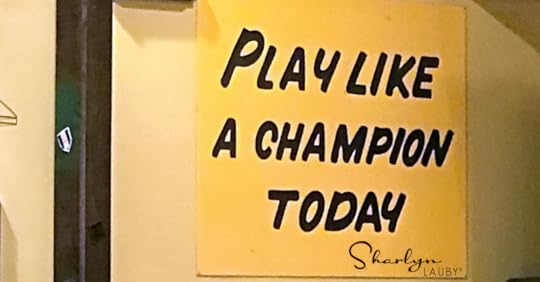
I was recently reminded of an activity that I’ve participated in years ago: visiting Capitol Hill. If you’ve never done this before, the Society for Human Resource Management usually coordinates visits during their SHRM Volunteer Leaders’ Summit and Employment Law & Legislative Conference.
It’s always interesting to chat with people about going to Capitol Hill and meeting with legislators. I remember talking with someone who said that she wished she had known sooner how valuable it was because she had always been afraid to go because she didn’t feel prepared. I can totally relate.
Visiting Capitol Hill should not be a scary experience. Our legislators want to hear from HR. So, for those who have never visited Capitol Hill, or it’s been a long time, let me demystify the process a little.
Plan to meet with both Democrats and Republicans
First things first – meeting with legislators on Capitol Hill isn’t about Democrats and Republicans. At no point will anyone require you to produce your Voter ID card or ask for your political party status. These meetings are about business. Specifically, how proposed legislation will impact your organization and your ability to recruit, engage and retain talent in the workplace. That doesn’t change based upon who you’re talking to.
If anything, it can be very enlightening to hear a political view different from our own. In HR, we’re used to hearing different points of view (POV) all the time.
SHRM handles all of the details!
I can’t speak for other organizations, but if you go to Capitol Hill with the SHRM Government Affairs team, they handle all the little details. The last time I went to Capitol Hill, here’s what happened:
There was a webinar prior to arriving in Washington to go over what will happen on the day of the Capitol Hill visit.
On the day of the visit, we were given time to meet with the other HR pros from our state. SHRM provided a high level debrief of the specific issues we will be discussing with legislators.
SHRM gave each participant talking points about the legislative issues and a summary of data about your state (population, demographics, etc.) I didn’t have much homework beyond reading a few pages.
SHRM also provided us with a notebook which includes the same talking points that you can leave at the legislator’s office. So, they can review the details at their leisure.
Lastly, all of the logistics were handled by SHRM. We were bussed over to the Capitol (and back), given a couple bucks in lunch money, and an umbrella because the weather was unpredictable.
When I tell you SHRM makes sure you’re prepared, I’m not kidding! It was incredibly organized. Kudos to them for sweating the small stuff. It really allows us to focus on the conversations.
Build relationships with staffers
During my last visit, I spoke with my two Senators and one Representative. Well, let me clarify, I spoke with the staffers of my two Senators and one Representative. There was a vote going on in the House of Representatives, so my Congresswoman needed to be there. Totally understandable. But from a timing perspective, it was three appointments in a single morning.
I know some people were disappointed that they didn’t get to meet with their elected official. While I wouldn’t have turned down the chance to meet them, the important part was having my POV heard. And I believe that happens with staffers. They are responsible for being the subject matter experts (SME) and advising the legislator. No different than what happens in our organizations – the CEO looks to us as the SME in HR.
One voice can be powerful
Another comment I often hear about going to Capitol Hill is that it’s a waste of time because “my legislator isn’t going to listen to me.” I completely understand. But I do try to balance my frustration with the reality that I cannot expect my legislator to have an epiphany after one 30-minute conversation.
I would challenge people to think about their visiting to Capitol Hill this way: On this particular day, SHRM organized over 400 people to visit Congress. We came at the same time to talk about the same issues. To organize such an effort speaks volumes about the role that HR professionals want to play in legislation that impacts business.
There’s an old saying that “In Washington, you’re either ‘at the table’ or ‘on the menu.’” The point being that HR needs to be at the table – the advocacy table. Today’s business issues are human resources issues. If we don’t make our voices heard, we cannot impact change in our organizations. Washington needs our leadership. Get involved.
Oh, and P.S. If you’re planning to attend SHRM’s Employment Law & Legislative Conferencein March 2019, plan to visit Capitol Hill. You’ll be glad you did.
Image captured by Sharlyn Lauby while exploring the streets of Miami, FL
The post HR Leadership Includes HR Advocacy appeared first on hr bartender.






October 2, 2018
Open Office Spaces: How to Be Productive and Effectively Collaborate
(EDITOR’S NOTE: At Rivier University, business leaders can gain the skills and knowledge needed to influence the workplace with an online MBA. Core business concepts, such as project management, strategies of innovation and more, are covered to help graduates develop a better understanding of the industry and what’s needed for success.)
Nearly 70 percent of offices have open layouts that are characterized by areas with no partitions and cubicles with low or high partitions, according to the International Facility Management Association. However, there’s some question about the effectiveness of open office space.
The initial advantages of accessibility and collaboration in an open office environment are being challenged. And the lack of privacy and confidentiality might be encouraging just the opposite of the intended result. A study of more than 42,000 people revealed that open office workers were more dissatisfied with “ease of interaction” than those in traditional, enclosed offices.
That being said, it appears that the open office trend continues to increase in popularity. And it’s not because of cost. I was recently quoted in the Detroit Free Press about Ford spending close to $1 billion dollars on new office space for their employees. And if you look at the pictures, it’s open office space.
4 Common Open Office Challenges
If organizations are going to continue offering open office spaces, they need to fully understand the benefits and shortcomings. Same with the employees who choose to work in that environment. No one wants to work in an unproductive office. Here are the top four challenges of open office working and how organizations and individuals can overcome those issues:
Challenge #1: Noise and Distractions. It will be come as no surprise that noise is the primary culprit for distraction in open offices. In an analysis of more than 100 studies, the International Review of Industrial and Organizational Psychology said when questioned about their open work environment, staff cite noise as the greatest issue of dissatisfaction.
But, when it comes to noise, not all noises are equal. In a 2008 survey of workers in private rooms and open offices led by Annu Haapakangas, respondents indicated that, while telephone sounds and other office noise was distracting, almost half (48%) indicated that speech was particularly frustrating. The survey added that employees on average wasted 21.5 minutes per day due to conversational distractions, making speech the top cause of reduced productivity.
To deal with the noise issue, organizations might want to consider allowing employees to listen to music or white noise. However, this might only be good for certain activities. A review of research published in the Psychology of Music found that, while background music can improve one’s emotions, it negatively impacts the reading process and memory.
The other option is headphones. I know an increasing number of organizations are providing employees with a headphone allowance that gives them the ability to select headphones that work for them. Headphones are a popular way to regain control of noise in open offices, even if it ironically comes at the cost of collaboration. The key to introducing headphones successfully into the work environment is allowing employees to feel they are in control, according to the Journal of Applied Psychology.
Challenge #2: Lack of Privacy. According to the Journal of Architectural and Planning Research, sharing facilities and workspace with others can lead to a psychological state known as crowding, which affects behavior. Risks in the open office — including interactions, noise, unwanted observation and printers in the common workspace — undermine privacy and comfort. As a result, these factors can cause office workers to have difficulty concentrating, react negatively to interactions, and become dissatisfied with their job.
Happakangas suggests that organizations consider how the space relates to a person’s job. “As periods of individual work and telephone conversations are still predominant in most office professions, open offices do not provide sufficient acoustic, visual and psychological privacy for typical office work.” To make the open office model work, businesses need to have more private areas that allow workers to focus on projects with maximum privacy.
Challenge #3: Absenteeism. The Scandinavian Journal of Work, Environment & Health reported that workers in open offices had the most days of absence due to sickness than any other type of office. Compared to private offices, open office workers took 62 percent more days off. This could be due to an increased risk for the spread of infection or exposure to environmental stressors such as distracting noise and lack of privacy.
One way to address this issue is by allowing employees who aren’t feeling well the option to work from home. Even if the company doesn’t have a formal telework policy in place, being able to take care of yourself and get a few work tasks done is better than coming into the office and making everyone else sick.
And while we’re on the subject of working from home, a Harvard Business Review study of employees at a Chinese travel agency showed that those who worked from home were happier, less likely to quit and more productive. This is an example of the growing research indicating that working from home can be beneficial for both employers and employees.
Challenge #4: Productivity. We’ve already talked about the challenges with open offices and distractions. But let’s take a moment to quantify how those distractions impact productivity:
Subjects made twice as many errors after a brief interruption of 2.8 seconds (Source: Journal of Experimental Psychology).
Workers who are interrupted make 50 percent more mistakes and take twice as long to finish their work (Source: “Reading for Results” by Laraine Flemming).
It took people an average of 25 minutes and 26 seconds to return to work following an interruption, when resuming work on the same day (Source: Conference on Human Factors in Computing Systems).
Complex tasks take an additional 15 minutes to regain the same intense focus (aka “flow”) as before the interruption (Source: “Peopleware” by Timothy Lister and Tom DeMarco)
Employees who work in open office overcompensate for distractions by doing things that decrease productivity, compromise the quality of work, create overtime, and push oneself harder. Bottom-line: Noise causes distractions that impact productivity so employees do things like take more breaks, further hurting quality and productivity.
Use Feedback to Maintain a Positive Work Environment
Let me share one last piece of research. A study in Environment and Behavior followed 21 employees who were relocated from traditional offices to open offices. Four weeks after the move, employees were not happy with their environment, stress levels, coworker relations and perceived job performance. Six months after the move, they were still unhappy and team relations broke down further.
I believe this last study sets the stage for the real takeaway. I think we’ve always known about workplace distractions and the steps we can take to mitigate those distractions. But the real key to successfully working in an open office environment is communication. Organizations must talk with employees about their work environment. Ask questions during the interview about how a candidate likes to work. Allow candidates to see the office environment during a realistic job preview. And build into the company’s wellness and well-being initiatives ways for employees to learn how to effectively manage their work habits.
I don’t know that the open office concept is going away anytime soon. But that doesn’t mean organizations shouldn’t create ways for employees to do their best work.
Image captured by Sharlyn Lauby while exploring the streets of Austin, TX
The post Open Office Spaces: How to Be Productive and Effectively Collaborate appeared first on hr bartender.






September 30, 2018
Rethinking Job Offer Remorse – Ask #HR Bartender
Don’t let the long story keep you from reading. This is a job offer story I think many of us can relate to. What should you do if you turn down a job, but then change your mind?
I need some guidance, and I’m hoping you can help.
A while back I applied for a position at a hospital, the posting said full-time, but I spoke to HR and explained to them that I was in school two nights a week and had clinicals twice a week (for the position I was applying for). They were receptive to that, and offered me a job, and said it would be weekends only until I was done with clinicals and school, then could go full time. I accepted the offer and went to the orientation.
When I spoke with the department manager, he said the hours were NOT full-time. I thought about it, decided it wasn’t for me, and explained to them in a professional email that I had to rescind my acceptance due to my needing a full-time position, and that my current employer (also a hospital) was going to assist me with getting a job in their department.
Two months later, nothing is moving with my employer and my current position isn’t paying the bills. Hospital A is now hiring for a full-time position, at a different facility. I sent an email apologizing for my mistake and would like to be reconsidered for the position.
My question to you, is how can I efficiently explain my situation without making it look like I’d jump ship as soon as I can? Because I wouldn’t. I’m afraid that’s the impression that they’ve gotten from me. When the real issue is whether or not I’d be guaranteed hours, because I’ve got bills to pay. Thanks!
There could be more to the story, but I think dealing with job offer remorse is a real issue. To help us understand what a candidate could do, I asked Chris Fields to share his expertise. He’san expert resume writer and human resources consultant who assists job seekers with their resumes, cover letters, LinkedIn profiles and job search over at ResumeCrusade.com. Chris has shared his expertise before with us. This post about which job title to use on your resume is one of my faves.
Chris, before we get to the reader’s question, let’s talk about a couple of other things. First, what advice do you give to someone who is weighing a job offer (so they make the right decision)?
[Fields] This is always a tough one. Obviously, you want to weigh the pros and cons of the company and the position, but my biggest suggestion is to not let fear drive the decision. What I mean by that is don’t chose the safe choice or the comfortable choice – push yourself. Don’t be afraid of a challenge.
I’m sure this person was surprised to hear that the position wasn’t full-time (after they accepted the job). When a new hire is told something contrary to their job offer, how should they proceed?
 [Fields] First, go to the person that made you the promise and discuss it further. If they are reneging on the promise, then think before you act.
[Fields] First, go to the person that made you the promise and discuss it further. If they are reneging on the promise, then think before you act.
Be strategic in your next move. Instead of quitting immediately and going back to your old job, take your time, use sick days, paid-time-off (PTO), and whatever other options you have while you search for a better situation.
This note also talks about promises from their current employer (in terms of helping them get a new position). When should someone “give up” on their current job and start looking for a new one?
[Fields] Give your current employer a deadline to make it right. If they show no remorse and have no plan, then start looking.
What’s the best way to reach out to a company that you’ve previously turned down – phone or email – and why?
[Fields] You want to be sincere as possible. So, if you have a point of contact name and phone number, call them and explain the situation. Companies choose the wrong person all the time and end up calling other candidates once they have realized the error, so why can’t you? Just tell them honestly, “It seems I made a mistake, and I am wondering if there is still an opportunity with your company.”
When a candidate turns down a job offer, does it make sense to ask the recruiter if they can stay in touch – maybe on LinkedIn? Or is that sending a mixed message?
[Fields] Yes, it does make sense. Many of the recruiters I know say they don’t mind it at all.
Finally, how can a candidate get across the need for “guaranteed hours” without sounding like they’re going to “jump ship”?
[Fields] During the initial conversation, make it clear why a flexible schedule is what you are looking for and be sure to let them know that one of the main reasons why you are accepting the position is because of the hours. But as employers do, at some point someone may try to change things, this is where you hunker down and hold your position.
A big thanks to Chris for sharing his expertise with us. Be sure to connect with him on Twitter at @ResumeCrusade and check out his blog at The Resume Crusade.
Hopefully, no one ever has to deal with a company not providing all the information necessary to make a good career decision. But if it happens, you have options. I love Chris’ advice about being strategic and thinking through your decision. Perspective can be a very valuable thing.
Image captured by Sharlyn Lauby while exploring the Wynwood Wall Art District in Miami, FL
The post Rethinking Job Offer Remorse – Ask #HR Bartender appeared first on hr bartender.






September 28, 2018
Manual Processes Can Slow Organizational Momentum – Friday Distraction
Just because we use a computer to process something doesn’t mean it’s high tech. A great example is today’s Time Well Spent from our friends at Kronos. While spreadsheets are created on computers, that doesn’t mean they’re the most effective and efficient way of doing something.
It’s time for us to realize that technology comes in levels. There’s the word processing and spreadsheet level. Then there’s the software solution level – an applicant tracking system would be an example. And finally, there’s the newer level of artificial intelligence and machine learning. Each level has their advantages and opportunities.
Organizations need to spend dedicated time thinking about which level of technology is going to help them accomplish their goals. Because it’s possible that choosing the wrong one could hold the organization back.
Look for signs that current technology isn’t doing everything it should. While it’s designed to be funny, I could see someone actually saying the line in today’s comic. And in many organizations, it might get laughed off. It’s time to take these comments seriously. An upgrade might be in order to avoid manual processes.
Give the organization plenty of time to upgrade. I don’t blame technology companies for announcing that they will be discontinuing support for old software and hardware. It’s the nature of business. What’s supposed to happen is that organizations are given enough notice to put plans in place. Upgrading takes time but they need to be done.
The answer isn’t always the latest version. When organizations need to upgrade, sometimes it makes sense to upgrade to the latest version. However, sometimes it makes sense to simply upgrade a little. Especially if the upgrade is expensive. The organization can use the time to get adjusted to the change and build up resources.
As organizations make technology decisions, they need to consider their long-term needs and avoid those manual processes. I remember when Mr. Bartender and I purchased our last computers. We had a conversation with the sales representative who was very honest about the length of time we would want to keep our equipment (before looking at new models). We keep that information top of mind as we’re planning our budget and other purchases.
Technology is a great thing and it allows us to meet our business goals. But we have to choose the right technology for the job.
The post Manual Processes Can Slow Organizational Momentum – Friday Distraction appeared first on hr bartender.






Sharlyn J. Lauby's Blog
- Sharlyn J. Lauby's profile
- 10 followers


